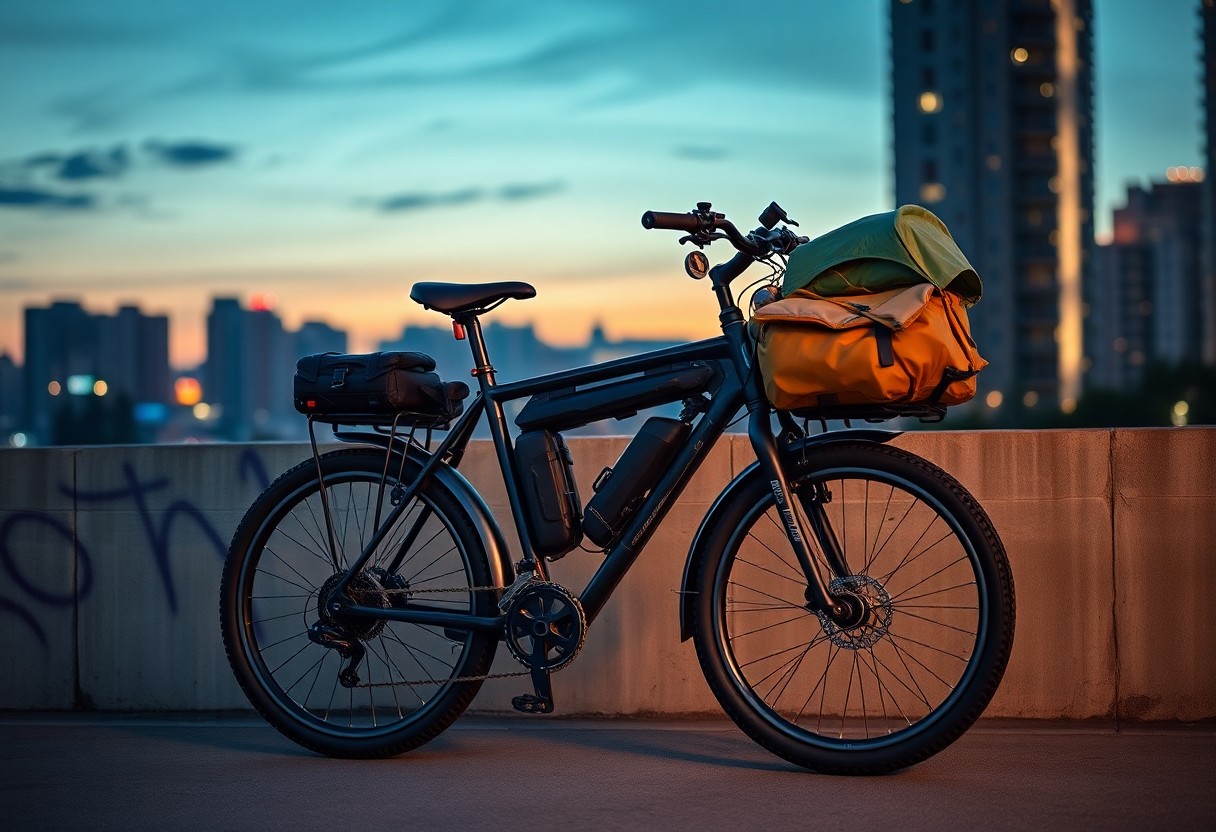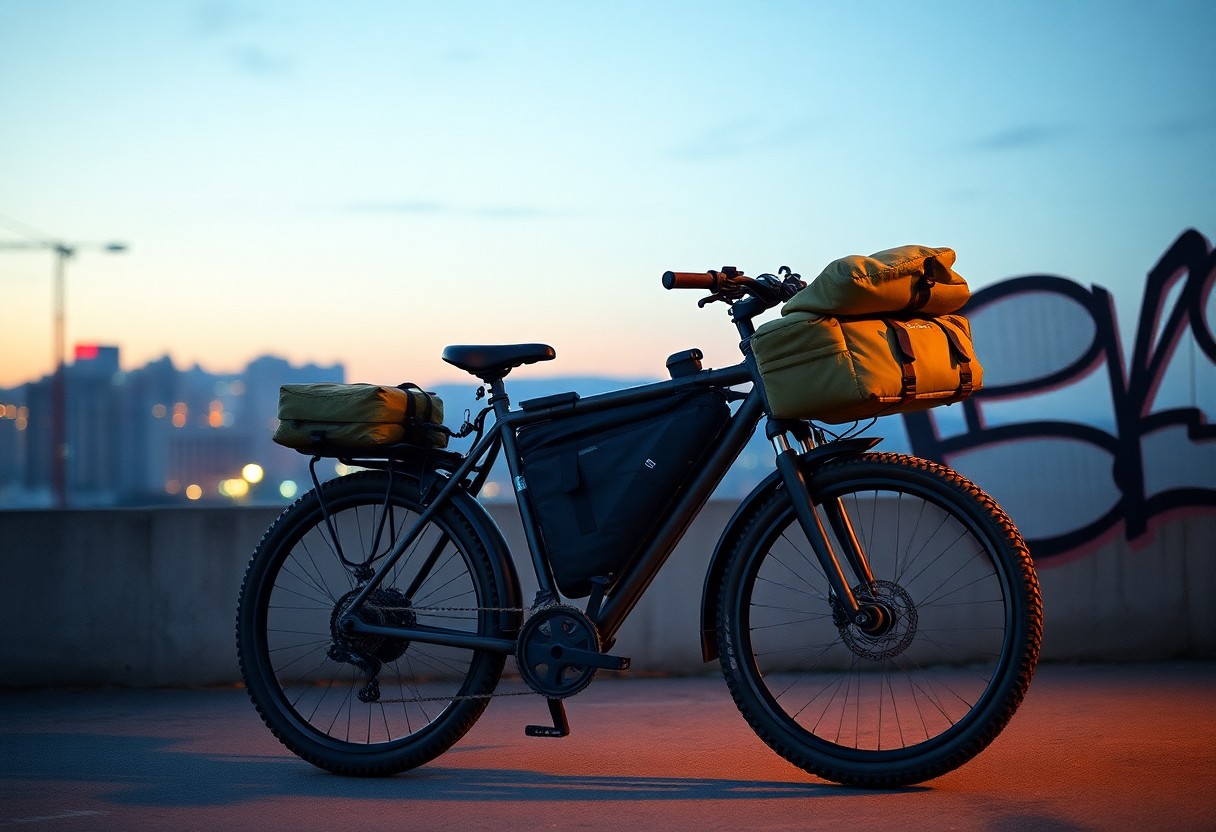Urban bikepacking offers you the unique opportunity to explore the fringes of cities while embracing the adventure of wild camping. It allows you to escape the hustle and bustle, discovering hidden gems within urban landscapes. While you navigate through lesser-known paths, you should be aware of potential risks such as safety concerns and local regulations regarding camping. This blog post will guide you through necessary tips and tricks to enjoy your urban bikepacking experience, ensuring that your journey to the wild is as rewarding as it is safe.
The Urban Landscape: Where Cityscapes Meet Wilderness
Exploring the edge of urban environments reveals a fascinating juxtaposition of metropolitan hustle and natural serenity. Amidst towering buildings, you’ll discover hidden pockets of wilderness that invite adventure. The beauty of urban bikepacking lies in this dynamic interplay, allowing you to cycle through the city and seamlessly transition into untouched landscapes, providing a unique backdrop for your wild camping experiences.
Defining the Edge: Understanding Urban Boundaries
Urban boundaries often dictate the transition from the concrete jungle to the wild. Cities expand, swallowing green spaces and creating artificial edges, yet these borders also serve as gateways to rural and semi-rural areas, rich with opportunities for bikepackers. Understanding these limits equips you to navigate the landscape efficiently, seeking out areas where nature intersects with urban life.
Urban Green Spaces: Hidden Gems for Campers
Urban green spaces offer unexpected havens for those eager to camp close to city life. Parks, community gardens, and nature reserves nestled within bustling neighbourhoods provide an escape, allowing you to pitch your tent surrounded by foliage and wildlife. These areas often feature camping-ready amenities, such as fire pits and picnic tables, catering to your adventurous spirit while maintaining proximity to urban conveniences.
As you venture into urban green spaces, the diversity of options becomes evident. Major cities often feature expansive parks like London’s Hampstead Heath or New York’s Central Park, which may allow for secluded camping experiences away from the city’s chaos. Smaller community gardens or nature reserves, such as Glendale Community Garden in Los Angeles, can also serve as quiet spots to unwind. Engaging with local park authorities can help you find lesser-known sites with fewer crowds where you can fully immerse yourself in nature, catering to both your camping needs and your love for urban exploration.

Essential Gear for Urban Bikepacking Adventures
Your experience as an urban bikepacker hinges on the right gear to tackle both city streets and wild terrains. Essential items encompass a reliable bike, comfortable camping equipment, and safety devices, all tailored for the unique challenges encountered at the urban fringe. Investing in high-quality gear not only enhances your performance but also ensures a more enjoyable adventure.
Selecting the Right Bike: Urban Versatility Meets Off-Road Capability
Packing Essentials: Balancing Weight and Necessity
Safety First: Gear That Enhances Security
Navigating Urban Terrain: Routes Less Travelled
Choosing the right paths through urban spaces can transform an ordinary bikepacking trip into an adventurous escapade. By avoiding the typical roads and busy thoroughfares, you open up a world of charming alleys, secluded parks, and hidden bike paths. Cities often house a network of trails that locals cherish, which may lead you to scenic views, historic landmarks, and vibrant neighbourhoods, away from the hustle and bustle. Tuning into your surroundings in this way inevitably enriches your urban bikepacking experience.
Mapping the Urban Wilderness: Tools and Techniques
Utilising apps like Komoot or AllTrails can significantly enhance your urban navigation. These platforms allow you to discover and create custom routes, filter by difficulty, and share experiences with fellow adventurers. A good-quality topographic map can be invaluable, showing lesser-known paths and elevation changes. GPS devices are also a dependable way to stay on course, plus they provide real-time updates to help you avoid potential hazards.
Exploring Off-the-Beaten-Path Routes
To uncover the hidden gems of your urban surroundings, take time to explore side streets, nature reserves, and riverbanks. Many cities boast abandoned railways or waterfront paths that serve as quiet retreats away from urban life. Engaging with local cycling communities or social media groups can yield personal recommendations, guiding you towards lesser-known treasures, making your journeys even more rewarding.
Consider, for instance, the vibrant bike trails along the River Thames in London, where journeying off traditional routes may lead you to charming cafés and lesser-visited historical sites. In cities like Paris, exploring the hidden alleys of Le Marais or the picturesque paths of the Parc des Buttes-Chaumont unveils an authentic local experience. By embracing such routes, you foster a connection with the urban environment that goes beyond the obvious tourist traps, enhancing your bikepacking adventures significantly.
Embracing the Wild: Techniques for Safe Urban Camping
Urban camping presents its own set of unique challenges, yet with the right techniques, you can fully embrace the experience while ensuring your safety. Navigating through unfamiliar streets and finding the ideal spot to rest requires not only resourcefulness but also a deep respect for the environment and local communities. By remaining stealthy and aware of your surroundings, you can enjoy the thrill of wild camping without attracting unwanted attention or causing disruption.
Locating Campsites: The Art of Stealth and Responsibility
Finding a suitable campsite in an urban landscape demands a keen sense of observation and responsibility. Look for discreet locations such as parks, greenbelts, or undeveloped lots where you can pitch your tent without being intrusive. The key lies in blending in and avoiding areas known for heavy foot traffic. Approach your chosen spot with a plan to leave it as undisturbed as you found it, ensuring you minimise your impact on both the environment and local residents.
Leave No Trace: Sustainable Practices for Urban Environments
Adopting sustainable practices while urban camping is important to preserving the habitats you encounter. Always carry out any waste you generate, dispose of it properly, and avoid disturbing wildlife or vegetation. Your goal should be to maintain the integrity of your surroundings, ensuring future campers can enjoy them as you have.
Understanding the principles of Leave No Trace is vital for urban campers. This includes not only the physical act of cleaning up after yourself but also being mindful of noise and light pollution. Using a quiet camping stove instead of a fire, and keeping your activities minimal during late hours ensures you disturb neither the wildlife nor your urban neighbours. Educating yourself on local regulations, especially regarding camping in public spaces, furthers your commitment to responsible urban exploration. By embracing these practices, you help cultivate a community spirit of respect and sustainability that benefits both campers and city dwellers alike.
Stories from the Saddle: Personal Experiences and Inspirations
Your bikepacking adventures are often punctuated by unique stories that inspire and motivate. You’ll discover hidden gems, encounter quirky locals, and share heartfelt moments around campfires, weaving a tapestry of experiences that deepen your connection to the journey and environment. Each story has the power to ignite your spirit, reminding you that every bike ride carries a new chapter waiting to unfold.
Urban Tales: Campfire Stories from City-Dwellers
As dusk falls and the warmth of the campfire envelops you, sharing tales with fellow urban dwellers reveals a shared camaraderie. You listen to thrilling accounts of unexpected encounters, navigating through unfamiliar neighbourhoods, and the occasional misadventure that turns into laughter. These stories foster a sense of belonging, proving that wild camping on the edges of cities creates bonds as rich as the adventures themselves.
Community Connections: Building Bonds Through Shared Experiences
Engaging with other urban bikepackers cultivates a vibrant community that thrives on shared experiences. You find that discussions around gear preferences, route planning, and local hotspots not only equip you with valuable insights but also forge friendships that stretch beyond the trails. The connections formed often lead to organised group rides, collaborative trips, and an invaluable support network, enhancing the essence of adventure.
By participating in local bikepacking groups or social media communities, you can exchange tips and discover new routes together. You might find opportunities to join organised events that not only emphasise the joy of cycling but also encourage the sharing of visual stories through photography. Engaging with others allows you to celebrate your triumphs and learn from setbacks, creating an enriching experience that makes each journey even more meaningful.
Summing up
As a reminder, urban bikepacking offers you a unique opportunity to explore the delightful intersection of nature and city life. By venturing just beyond the urban landscape, you can discover serene camping spots while enjoying the thrill of biking. This experience enables you to unwind while still being connected to the vibrancy of the city. Equip yourself with the right gear and plan your routes carefully to maximise your adventure. Embrace the blend of urban and wild settings and let your journey unfold into an enriching escape.
